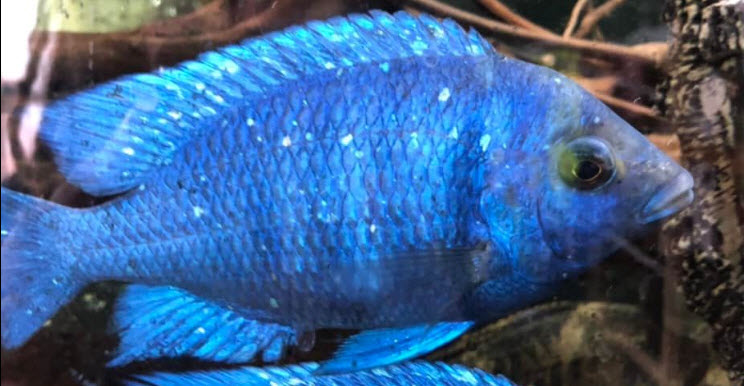There is an interesting relationship which occurs in fish only aquariums. The amount of biofloc, beneficial bacteria and nitrate produced in a filter media is dependent on the ratio of carbon to nitrogen in the food. With higher carbon to nitrogen ratios there is LESS BENEFICIAL BACTERIA PRODUCED, more “bad” heterotrophic bacteria produced in the water column (VERY unhealthy for the fish), more nitrogen containing biofloc produced (more “assimilatory denitrification”), and less nitrate in the water. This is NOT a desirable condition.
It is thus best to utilize a high protein food (a low carbon to nitrogen ratio food) and to remove the more nitrates produced with more water changes. The effect is considerable. A food with 50% protein will have a carbon to nitrogen ratio of very roughly 5.4. A food with 35% protein will have a carbon to nitrogen ratio of very roughly 13.5, almost two and a half times greater ratio.

The 35% protein food will have large amounts of floc build up (“assimilation”), low amounts of beneficial bacteria (“autotrophic nitrification”) and frequent ammonia spikes. The 50% protein food will have very little biofloc buildup, a lot of beneficial bacteria, healthier fish, and no ammonia spikes. The 50% protein food will need very roughly 30% more water changes of the 35% protein food to control nitrates.

There are several ways one can get an undesirable high carbon to nitrogen ratio. One is to use a low protein food. Another method is to add something like “Stress Coat” with aloe vera gel (polysaccharides or polymerized sugars with NO nitrogen and lots of carbon). So this is a good reason to not use stress coat products.
Note this process is highly variable. The lower the pH the more floc will build up. The less water circulation and the less water aeration the more the floc will build up.

Planted Aquariums and Biofloc
The biology of a planted tank is very different from the biology of a fish-only tank. Plants absorb carbon dioxide and incorporate it into carbohydrates. When a plant leaf dies (a quite common occurrence), these carbohydrates are released to the water column. So planted tanks can have a very high carbon to nitrogen ratio and rapid buildup of biofloc.
But this rapid buildup is not a problem for fish since the plants absorb all the ammonia produced. So you don’t need beneficial bacteria in any aquarium where there are thriving plants. This is often what is called a “balanced” aquarium. The biofloc buildup does need to be removed when the flow slows.
Note this applies only to heavily planted aquariums where the plants are thriving. It does not apply to a fish aquarium that happens to have a few plants in it.

Removing Nitrates with Assimilatory Denitrification
Now this “assimilatory denitrification” can be used to remove nitrate from the water. One sets up an aquarium with three large powerhead operated sponge filters or three layers of 20 ppi foam in a large canister filter and runs it for two months. One adds a carbohydrates such as sugar daily at about half the level of the food added daily.
Then ONE of the filters is thoroughly cleaned of the nitrogen filled brown gunk in the sponge. At three months a second sponge is cleaned. And at four months a third sponge is cleaned. The process is then repeated. This means a sponge will operate for three months between cleaning.
This will ONLY work with a very large amount of sponge per gram of fish. If there is not a large amount of sponge the water will become filled with bacteria and very toxic for the fish. I do not recommend this for denitrification. The process is far more dangerous than the nitrate is. For more information on this method of nitrate removal go to this link:
8.9.3. Assimilatory Denitrification

Wood and Cellulose
Some try to apply this carbon to nitrogen ratio in the analysis of wood and cellulose in the aquarium. It doesn’t work very well. Organisms just have a VERY tough time breaking down cellulose. Some scholars hypothesize that coal would not exist except that no organisms capable of breaking down cellulose existed until after the age of dinosaurs.
So wood, either as decoration or as an underlayment in a soiled aquarium, will NOT result in high biofloc in the filters. Indian almond leaves have a form of cellulose which breaks down much more rapidly and Indian almond leaves can result in bad conditions in the aquarium


